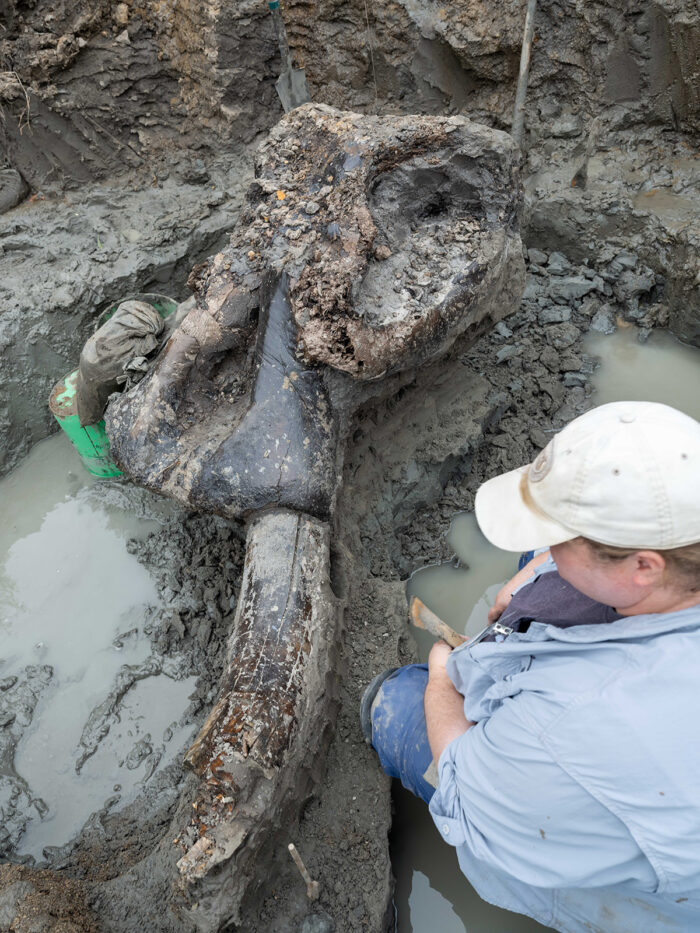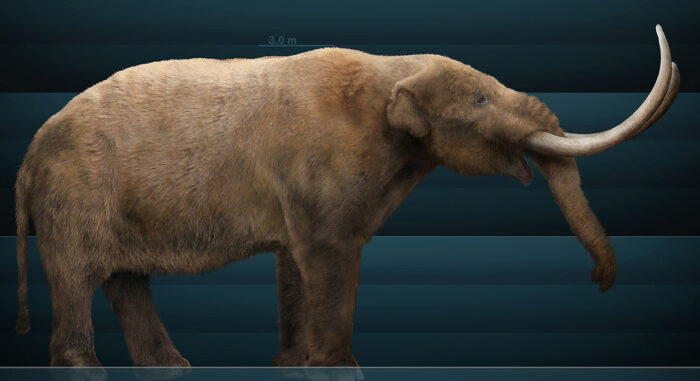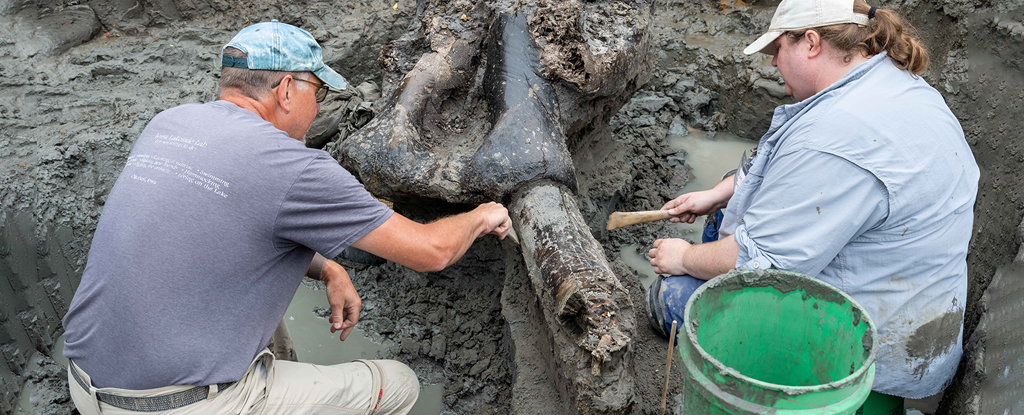An ancient and mighty tusked beast has been exhumed from the mud of an Iowan creek bed.
It took enthusiasts from the local community and University of Iowa archaeologists 12 days to carefully unearth several skull bones after a resident reported remains of an oversized leg on private property to the Office of the State Archaeologist back in 2022.
The 13,600-year-old fossil remnants belong to a mastodon (Mammut sp.), a long-extinct, distant relative of today's elephants.
"This is the first-ever well-preserved mastodon (primarily the skull) that has been excavated in Iowa," the archaeologists explain in a Facebook post.
The discovery of a juvenile mastodon tooth indicates there may be more remains in the area. Stone tools were also among a number of recovered artifacts that were dated to within a few thousand years of the mastodon's death.
The archaeologists hope a detailed analysis of their finds may provide further clues to the ancient relationship between the two species.
"We're really hoping to find evidence of human interaction with this creature – perhaps the projectile points and knives that were used to kill the animal and do initial butchering," says state archaeologist John Doershuk. "There's also potential evidence on the bones themselves – there could be identifiable cut marks."

While mastodons were around the same height as modern elephants, they were likely bulkier, estimated to weigh up to 6,000 kg (6 tons).
Like other megafauna, including South America's giant sloths and Australia's mega wombats, they slowly faded from the landscape soon after humans arrived in North America around 14,000 years ago.
The last known mastodon was recovered from peat near Pleasant Lake in Michigan. Dated to nearly 10,500 years ago, it shows signs of butchery and evidence of having been hunted.
While the exact cause of their extinction is unknown, researchers suspect a combination of human activity and climate change likely played critical roles, with a tuberculosis pandemic also being implicated.
Both mammoths and mastodons roamed North America for millions of years, through the last ice age, although mammoths arrived on the continent much later whereas mastodons are believed to have originated in the Americas.
Despite their similar appearance they last shared a common ancestor around 20 million years ago.

Unlike their larger, distant cousins, mastodons were forest dwellers. Their teeth had adapted to grinding tougher trees and shrubs, rather than slicing herbs and grasses like the plains-dwelling mammoths.
Mastodons roamed all the way into Alaska during warmer climatic periods. We're now witnessing today's species like moose and beaver make similar northern expansions in their distribution.
In total, the archaeological team found 20 different parts of what they suspect are remains of the same animal, including fragments of a rib, its spine, another leg bone, and a knee cap. Analysis of its tusk should reveal additional biological details of the giant mammal, such as its age, sex, and diet.
"I never thought, in a million years that I would get the experience of excavating the skull of a mastodon," Dan Clark wrote in a Facebook comment. "I cannot wait to see the final product when it has been all cleaned and restored."
Once the university finishes its analysis the bones will be exhibited at the Prairie Trails Museum.
